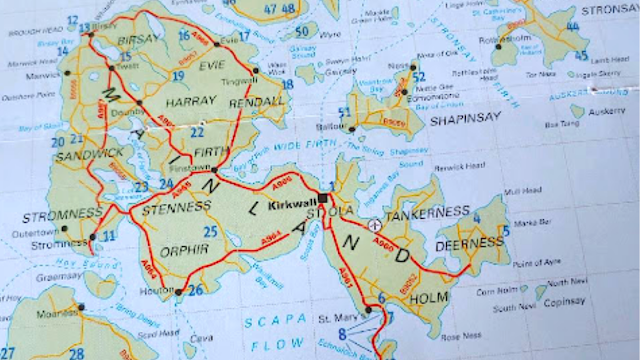Orkney Islands Part 2- Historical Sites
The Orkney Islands are 20 miles north of the coast of Scotland.
In the Orkneys, you will find many prehistorical remains,
most of them very well preserved.
Maes Howe is a burial chamber, built around 2800 BC for an important
family. The entrance is a long low corridor arriving to a burial chamber. The
interesting fact is that the tomb is illuminated when the winter solstice
sunset shines down through the passage once a year.
Let’s go now to the Ring of Brodgar, a circle of 60 stones of
which 27 remain standing. It dates from around 3000 BC and was probably used
for religious and social ceremonies. Nearby, in Stenness only 4 stones survived.
Scapa Flow is a body of water sheltered by 6 islands, which
were used to keep ships since prehistory. It was a British naval base during
WW1 and WW2. However, on October 14, 1939, a German U Boat found a small
entrance and sank the battleship” HMS Royal Oak” with over 800 sailors who all perished.
To prevent another tragedy, the British Navy chose to lay
massive barriers of stone and concrete on the seabed from island to island. A
causeway was built on the top. They are called “The Churchill Barriers”. It
took many men as well as a group of Italian prisoners of war to achieve this protection.
On their spare time, a group of Italian artists decided to
build the Catholic Chapel they were missing in the camp. With ingenuity, they
used scrap material like 2 standard Nissen huts, they joined together as a base,
as well as obsolete military equipment to create the chapel. The corrugated
iron was hidden by plaster. The interior was beautifully painted in striking “trompe
l’oeil” style and the windows were decorated. It became a lovely work of art,
visited now by tourists. A committee was formed later to preserve the beauty of
the Chapel along the years.
From the Prehistoric time till now, the people of the Orkneys
show a pattern of hard work despite a hard climate and their northern position
on the map.















Comments
Post a Comment